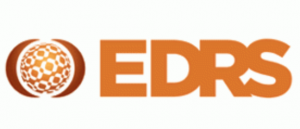More young Australians today are consuming a very pure form of ecstasy, with a quarter reporting a “weekly or more usage” to the Ecstasy and Related Drugs Reporting System (EDRS).
In 2008 there was disruption and shortage to the supply of ecstasy, now 36 per cent of pscyhostimulant users call it their drug of choice, seen in new research conducted by the National Drug and Alcohol Centre (NDARC).
[infogram id=”68ebaa46-3a55-4133-97e0-8e5f0e4f2c9b”]Senior Researcher, Amanda Roxburg, says this is due to a “resurgence in the ecstasy market”, as ecstasy purity within Australia has risen by five per cent in the past year.
“What we’re seeing recently is that ecstasy in crystal or tablet form has increased in purity, which is backed up by law enforcement seizure data,” said Ms Roxburg.
Psychostimulant users should not mistake a higher level of purity to be safer than less pure substances, warns Ms Roxburg.
[infogram id=”aba1a806-d51b-42d7-8941-b82c9c5beb96″]There’s really good evidence from Europe that shows from 6000 people interviewed and tested on ecstasy consumption, if they were taking a higher dose of ecstasy, they were more likely to report adverse effects,” said Ms Roxburg.
NDARC spoke to approximately 100 Australians per state and territory this year and found participants were generally male, 23 and well-educated.
Almost half of all participants nominated night clubs as the last location they used ecstasy, with the median price of their last ecstasy purchase at $25.
[infogram id=”364606c5-1f67-486a-b63e-535703fc6ffd”]Participants from South Australia and Western Australia received the highest ecstasy usage results with some categories almost doubling the National median.
South Australians were regular ecstasy consumers with 40 per cent taking it weekly or more and 65 per cent consuming more than two tablets or pills.
Western Australians had the highest availability with 79 per cent saying it was easy to obtain ecstasy pills, powder or capsules.
Victoria received average results across most categories, but recorded the highest levels of ecstasy purity in Australia.
Ms Roxburg advises that users should be aware of the variability in ecstasy dosage with some tablets possibly containing unspecified pscyhostimulants.
“We don’t know how people are going to respond to a particular dose, because some of these tablets may not actually contain ecstasy at all,” said Ms Roxburg.
Following last summer festival season’s six deaths by drug overdose, there have been increased calls for pill testing.
Our research certainly forms some of those conversations around pill testing and Dr Monica Barrett from NDARC is closely exploring data for that solution,” said Ms Roxburg.
Other than monitoring usage, NDARC also focusses on drug prevention for students with an online module called “Climate Schools”.
“A lot of schools are undertaking our online education around alcohol and other drug use and we’ve seen pretty good results in terms of changing intentions to reduce usage”, said Ms Roxburg.
NDARC’s 13 years of data research on ecstasy and related stimulants has perpetuated much of the conversation and action on policing, harm reduction, public health and policy responses.
This is a really invaluable piece of research that provides good information for all those key stakeholders”, said Ms Roxburg.
The EDRS monitors the price, purity, availability and patterns of ecstasy, methamphetamine, cocaine, ketamine, GHB, MDA and LSD.
The surveys of drug users are designed to provide early warnings of trends and are not representative of drug use among the general population.

Image and via The National Drug and Alcohol Research Centre https://ndarc.med.unsw.edu.au/project/ecstasy-and-related-drugs-reporting-system-edrs-d2
